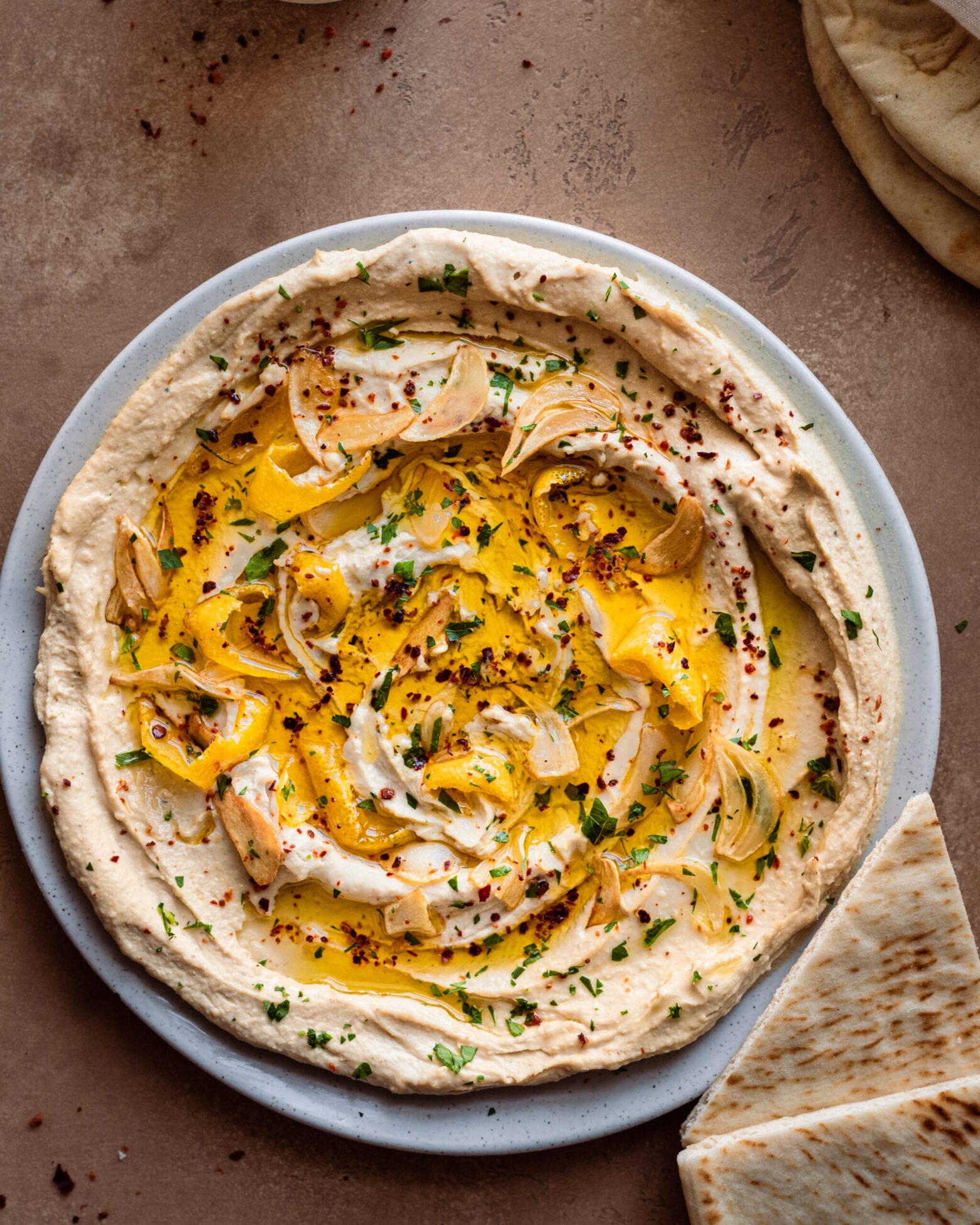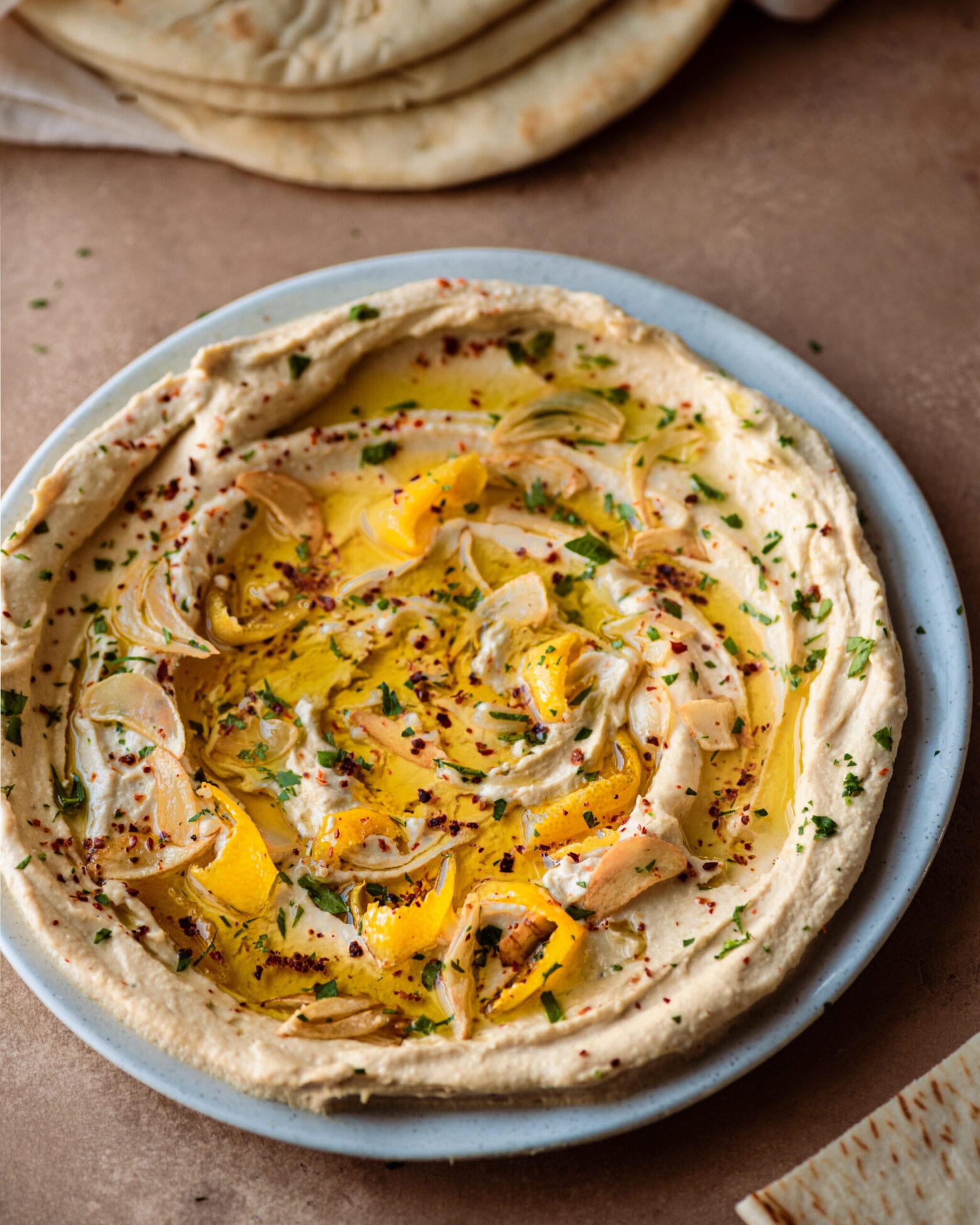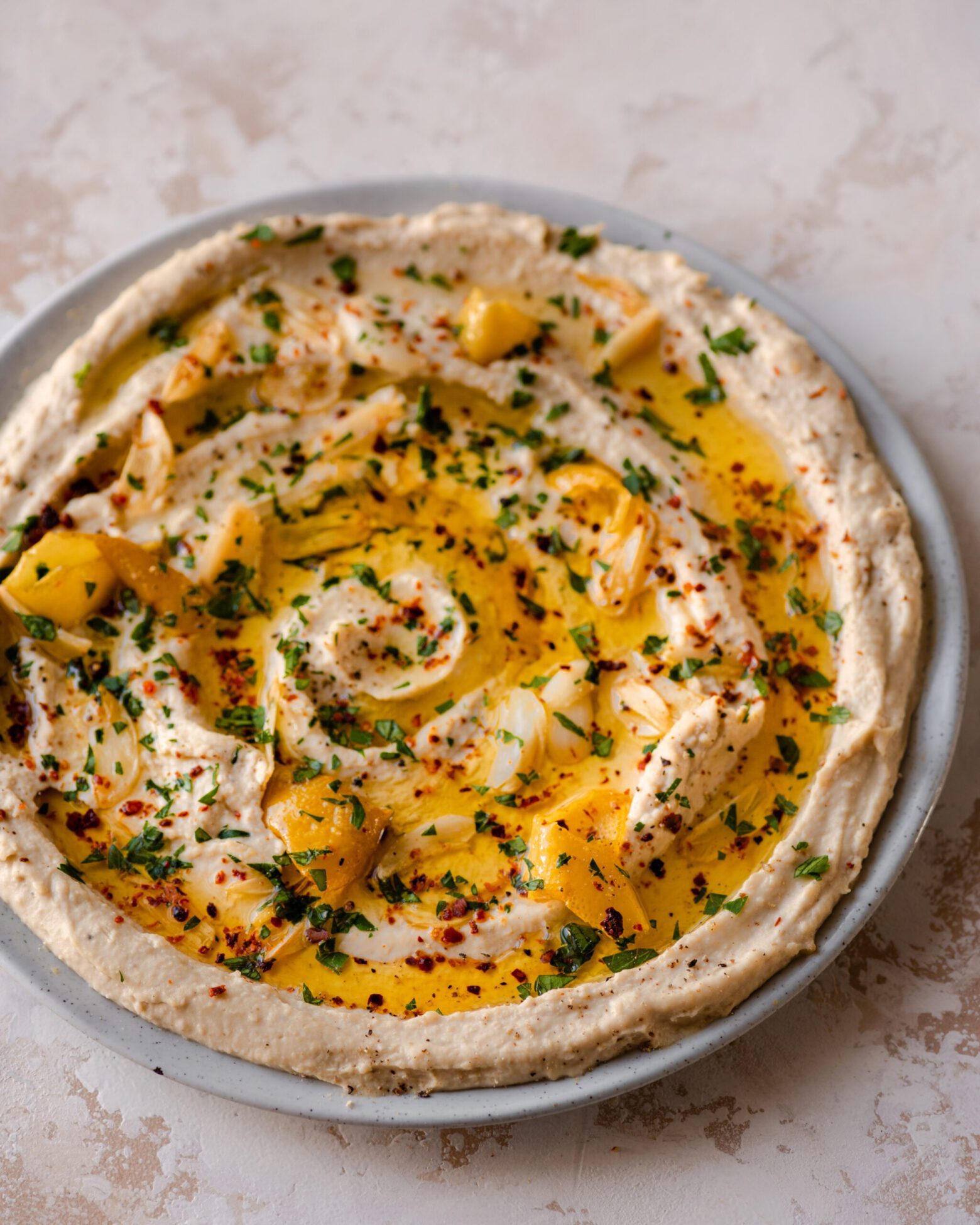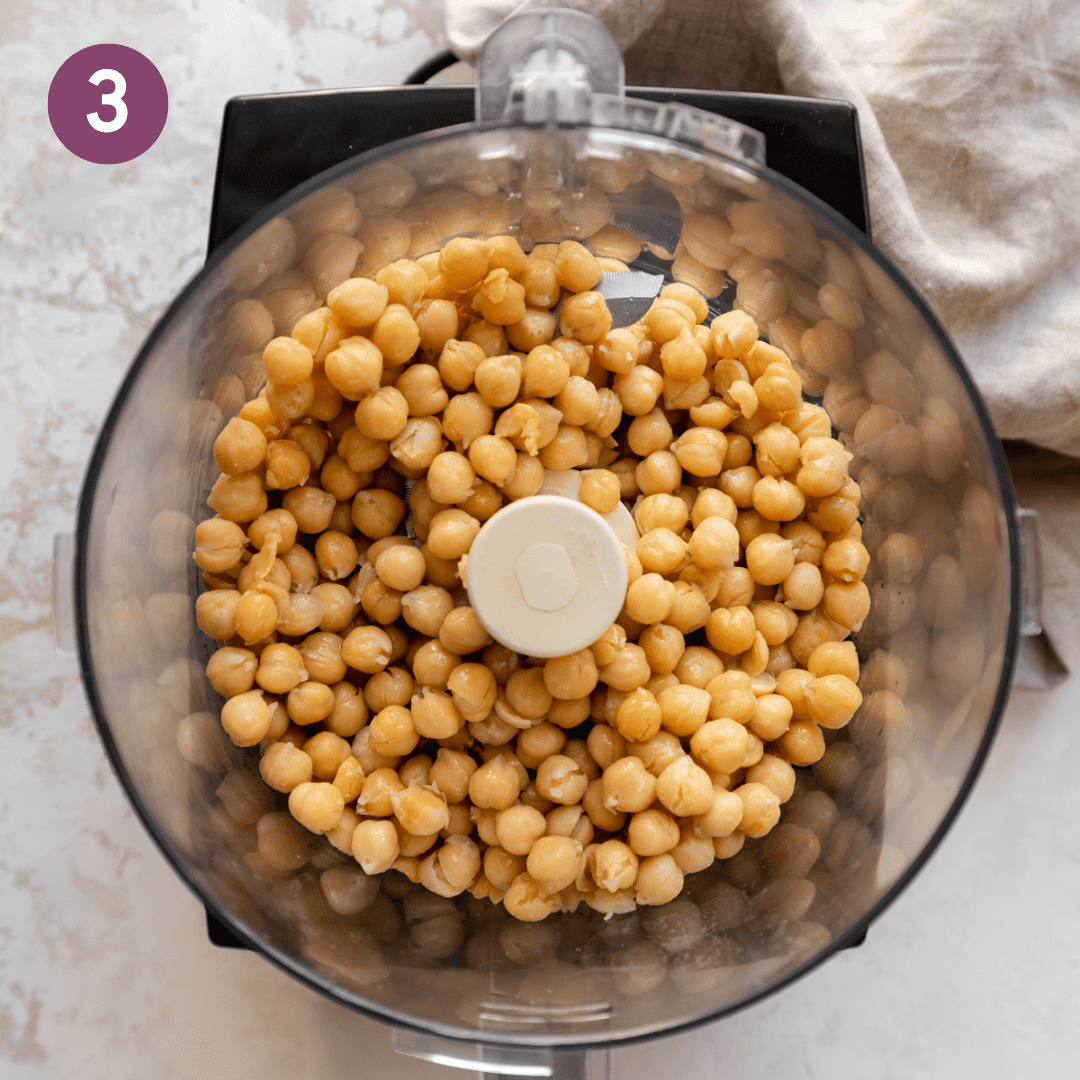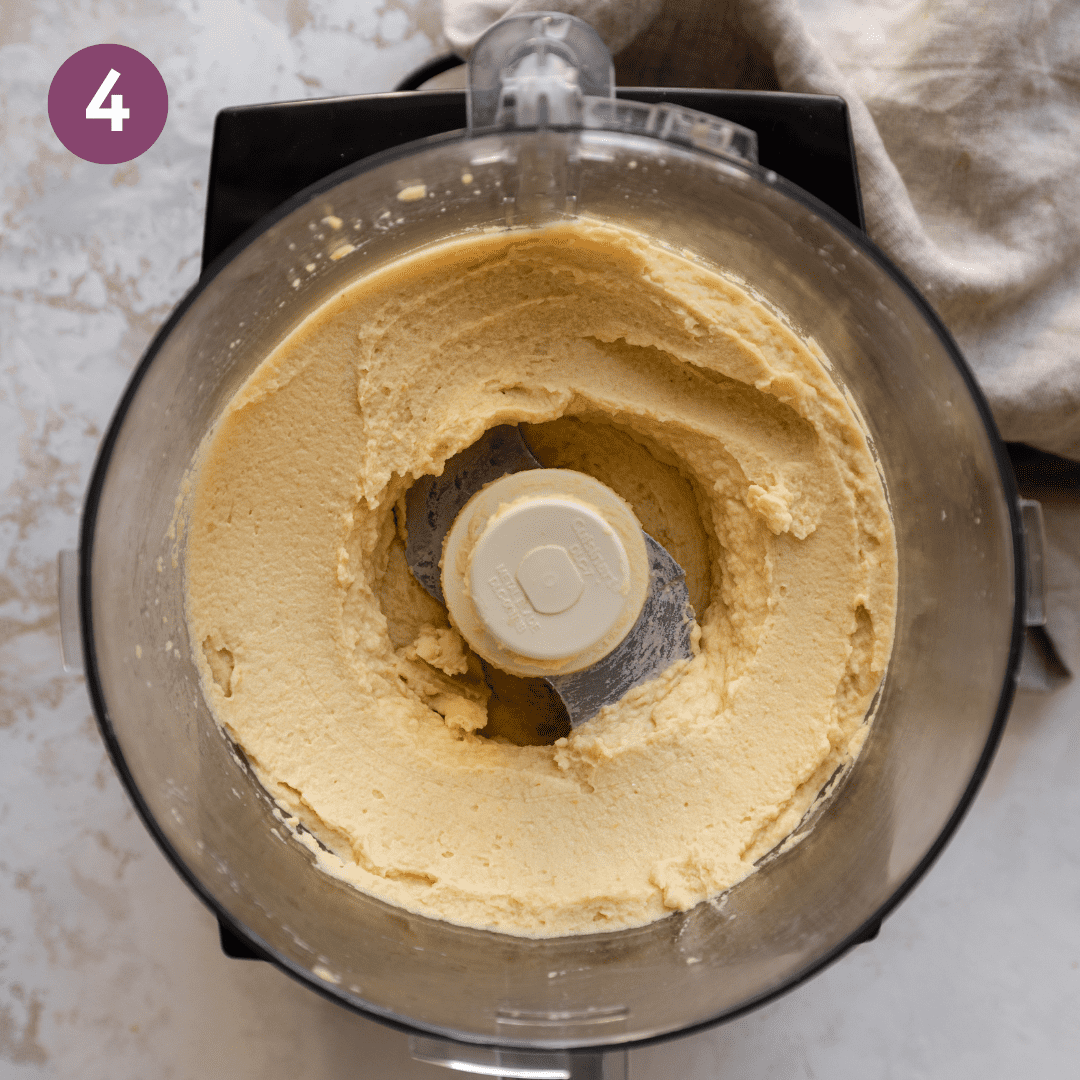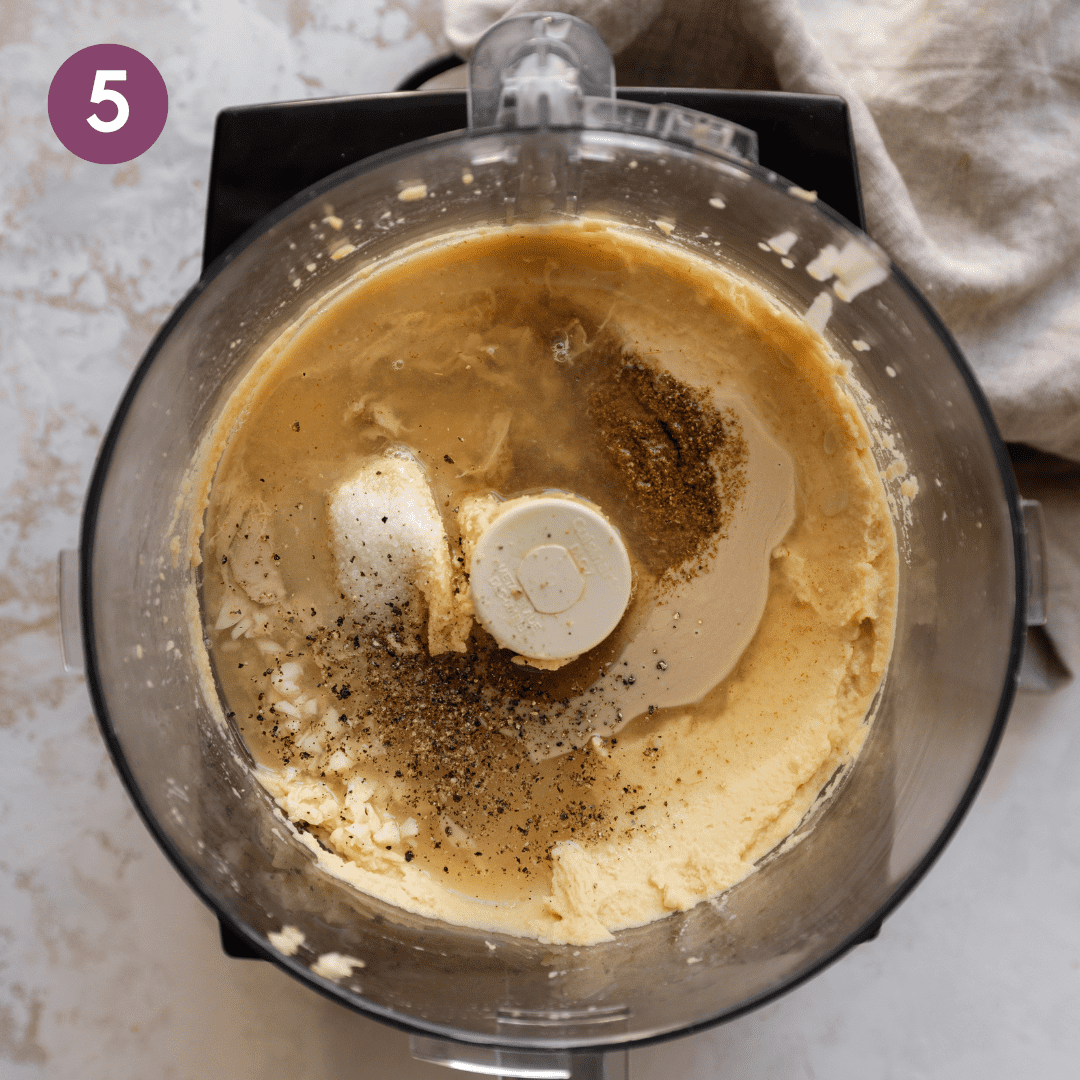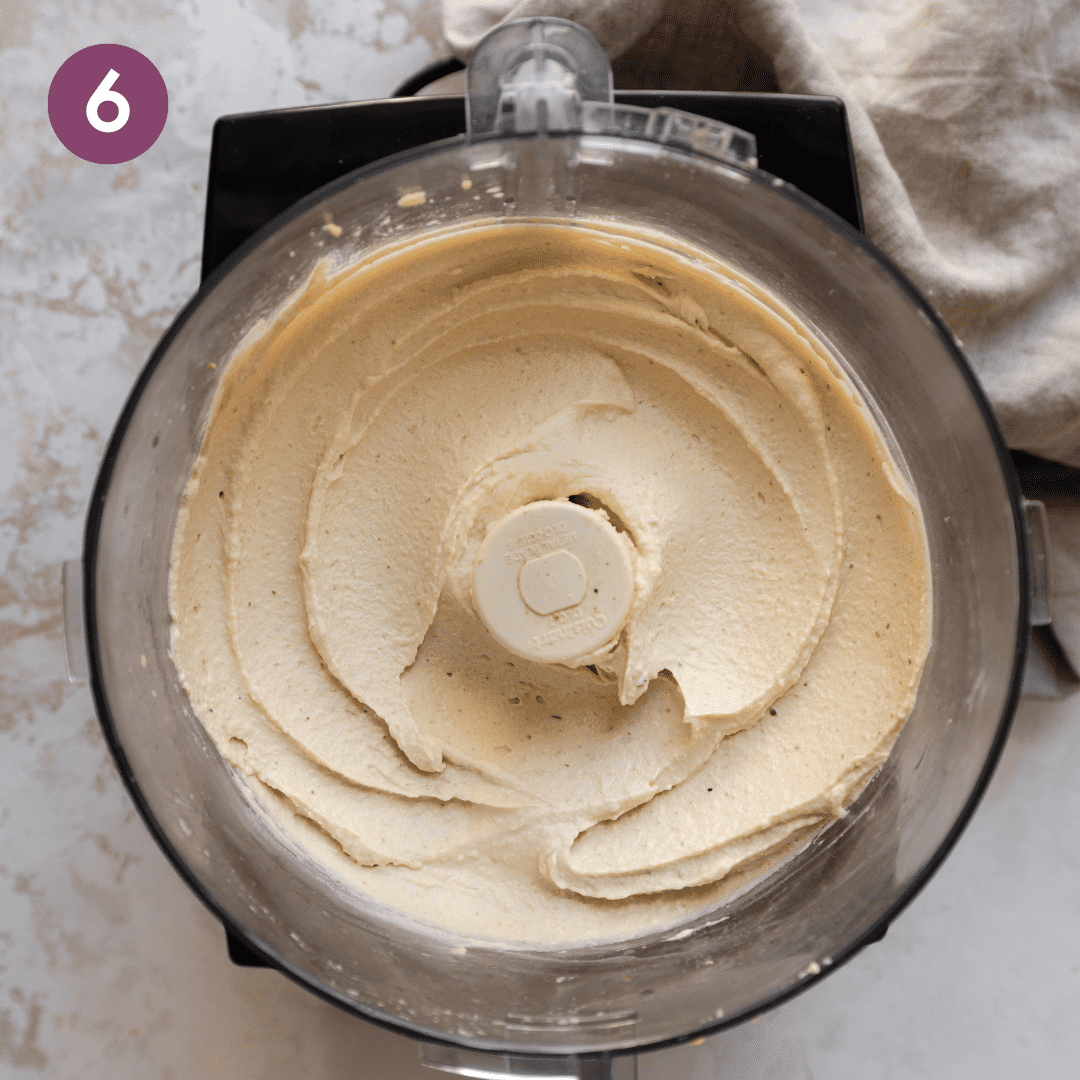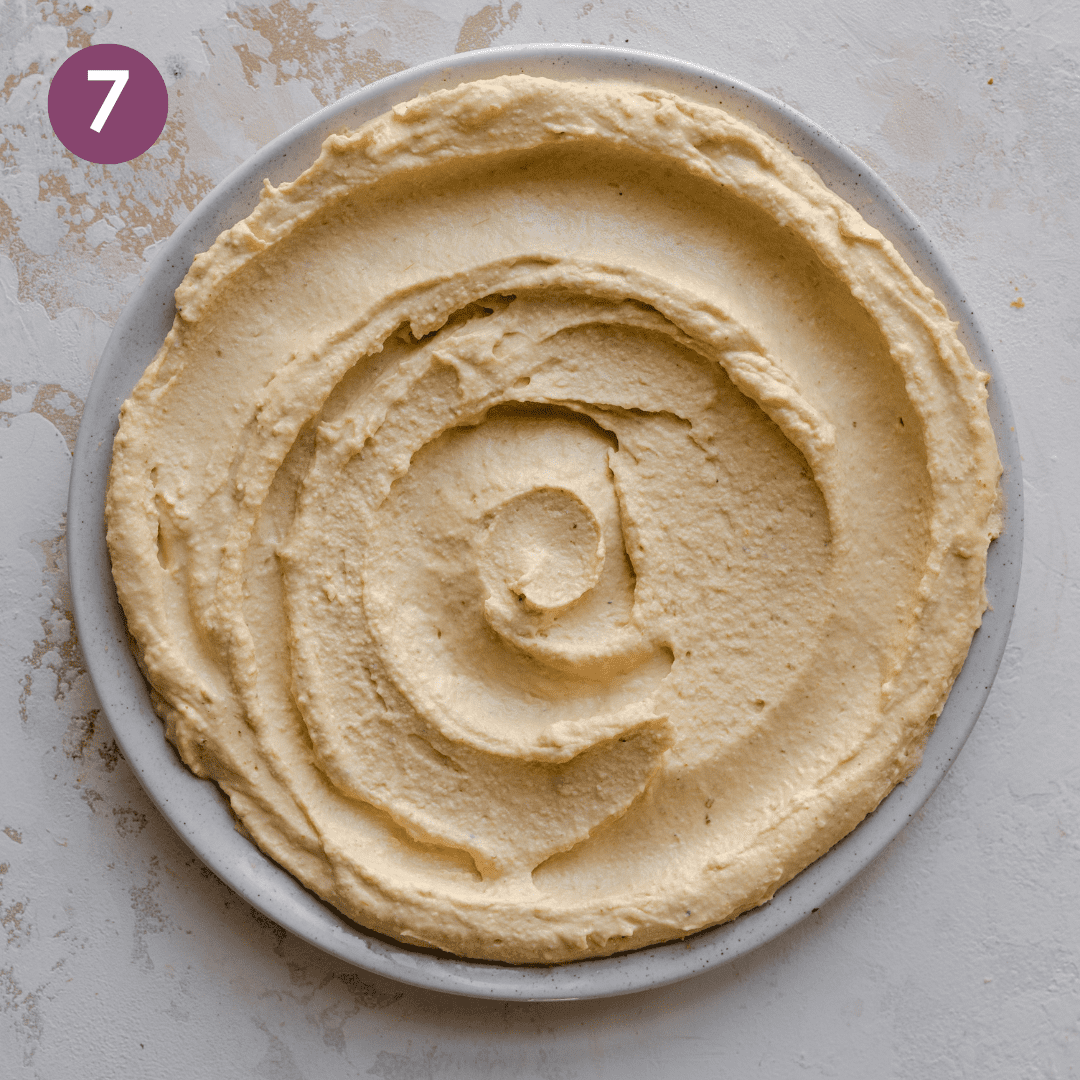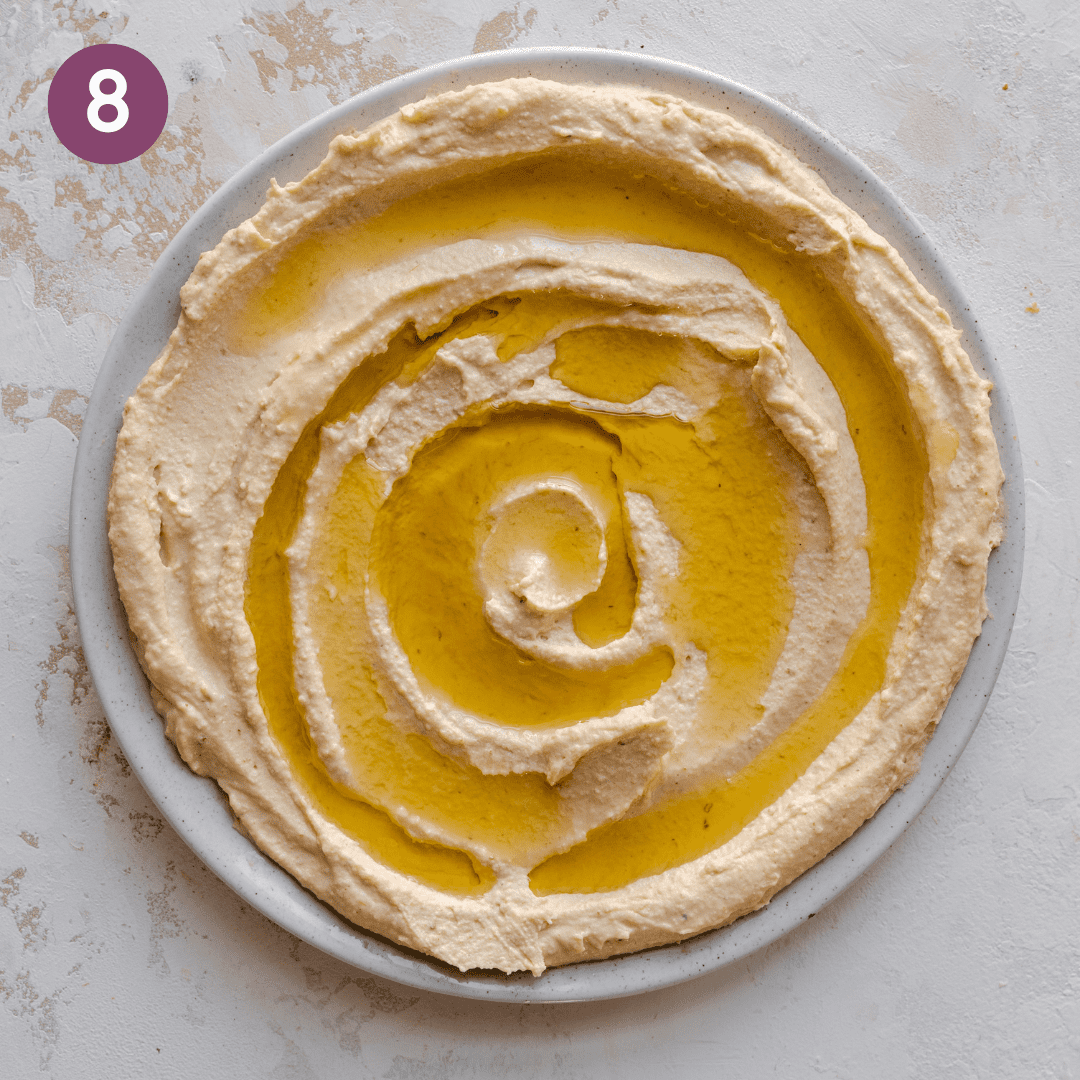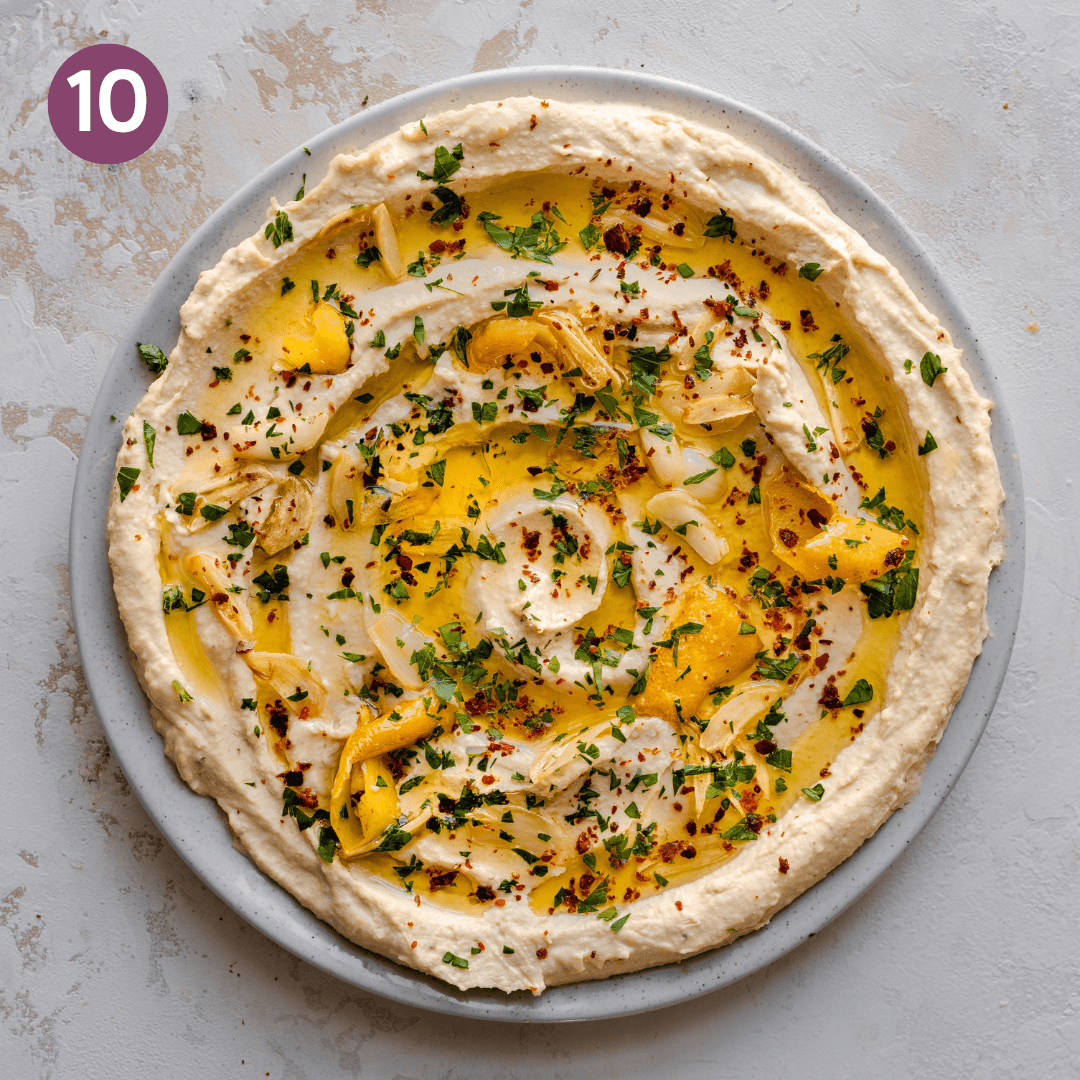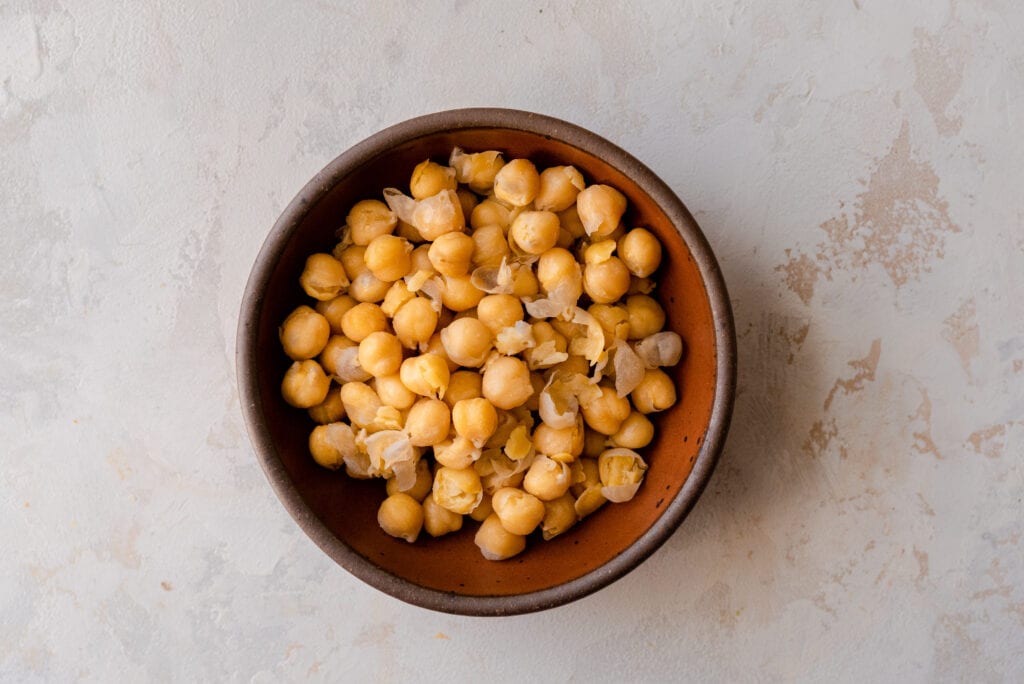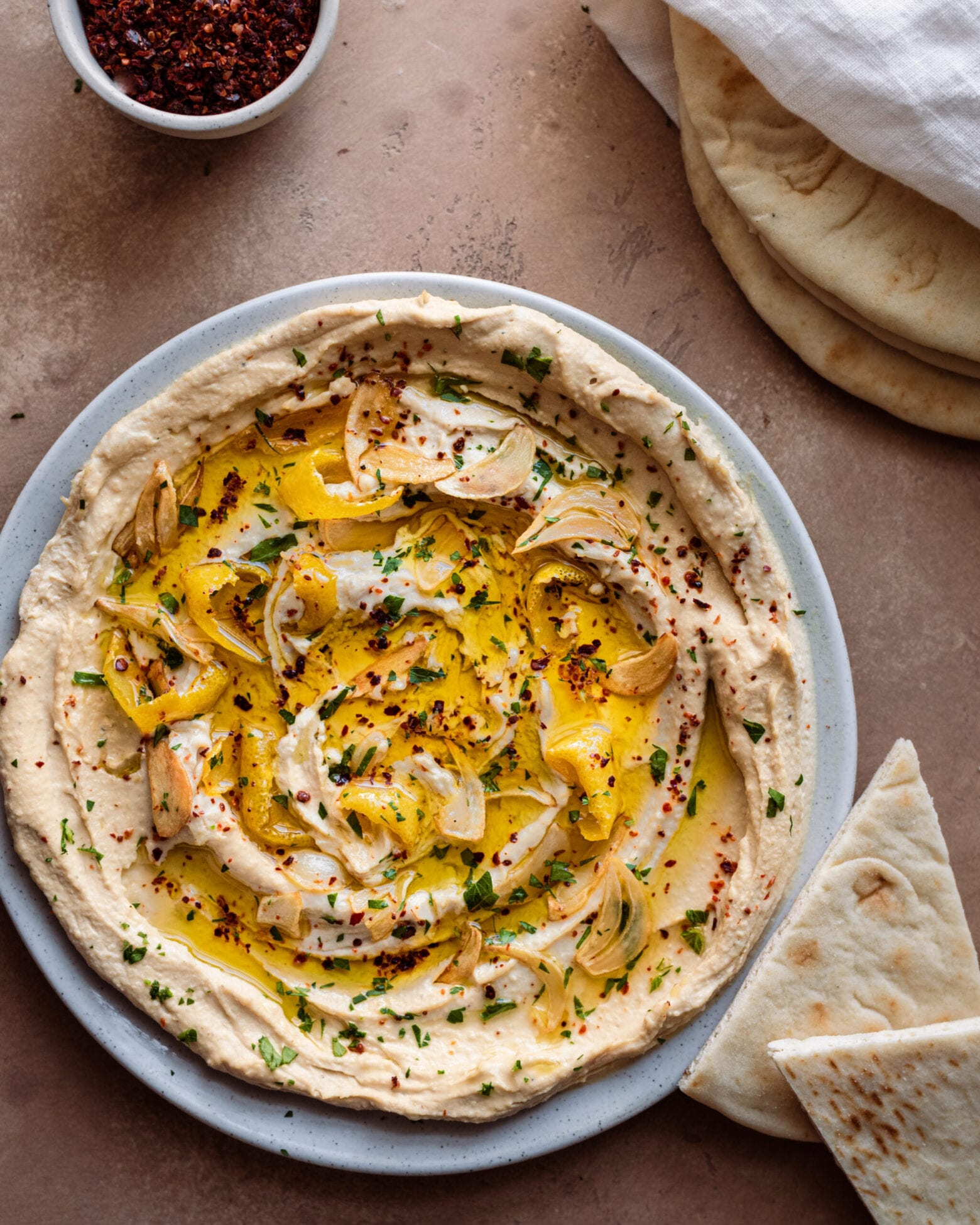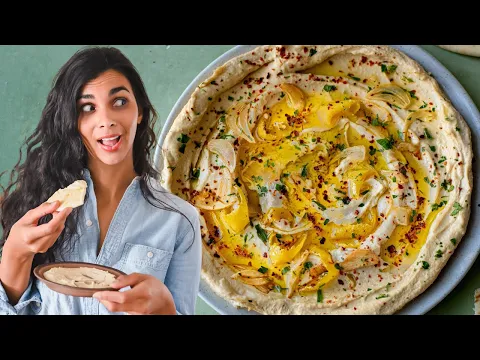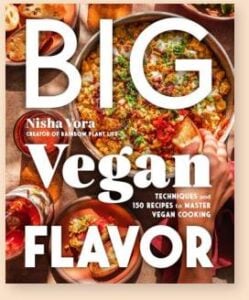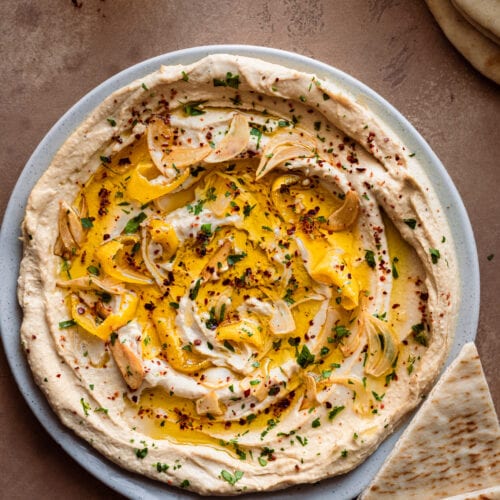I’ve been making homemade hummus for over 8 years now. The most important lesson I’ve learned is that you don’t need to be a world-class chef to make the best homemade hummus. You just need a few quality ingredients and some tricks up your sleeve!
Why this recipe works
Incredibly creamy and smooth.
If you’ve eaten store-bought hummus, then you’ve experienced its infamous stiff and gloopy texture. That is NOT what we want. Instead, hummus should be creamy, as well as somewhat loose and pliable. Hummus has been a staple in many Middle Eastern countries for centuries. There’s actually quite a debate about who invented hummus and which countries can claim hummus as their own. If you’re interested in reading more, check out this article on who invented hummus and this article on hummus’s origins. For more cultural and sociopolitical context, I also recommend the books of Palestinian food writer and historian, Reem Kassis (The Palestinian Table (2017) and The Arabesque Table (2021). The process and techniques I used have been largely influenced by three chefs—Yotam Ottolenghi, Sami Tamimi, and Michael Solomonov—so be sure to check out their cookbooks if you want to learn even more! A handful of good-quality ingredients and simple techniques are all you need to make the best homemade hummus. The texture of this hummus is extremely creamy and smooth, never gritty or chunky. That alone will have you reaching for more.
Life-changing flavors.
I have a long list of grievances with store-bought hummus but one of the biggest is the flavor (or lack thereof). It’s also usually served cold, which causes the nutty richness that makes hummus amazing to lie dormant. As chef Michael Solomonov mentions in his cookbook Zahav (the titular name of his restaurant where hummus is the most popular dish on the menu): “[Even the best store-bought hummus] requires certain additives to make it shelf-stable–most likely citric acid. These additives turn hummus sharp and sour–light years away from the dreamy qualities of fresh hummus.” – Chef Michael Solomonov Using fresh ingredients to make hummus from scratch helps you avoid those additives and flat flavors. Instead, each scoop is boldly nutty, lemony, and rich in flavor. It’s a life-changing experience.
It’s just plain foolproof.
It may sound complicated, but making your own hummus is easier than you’d think. All of the ingredients are easy to find, and the dip comes together entirely in a food processor. The recipe gets a little more complicated if you’re cooking dried chickpeas yourself (the method I recommend) but I will guide you through the process below.
Ingredient notes
Chickpeas
AKA garbanzo beans. You can use both canned and dried chickpeas to make hummus but for the very best hummus, I like to cook dried chickpeas myself. Canned chickpeas come with a firmer texture, which can leave the hummus with a slightly chunky texture. Tip: Using canned chickpeas? Remember to save the aquafaba (the water in the can)! Use it to make banana bread, vegan aioli, frothy cocktails, vegan whipped cream, and so much more.
Tahini
Tahini is a smooth and rich paste made from sesame seeds. It’s a primary ingredient in hummus and should never be left out. A good-quality brand of tahini makes a HUGE difference because its flavor is so prominent in every bite.
Lemon
Freshly squeezed lemon juice brightens up the rich, nutty, and savory flavors. Without it, the hummus would lack its distinguishable ‘pop’.
Garlic
Some people (hi, me!) like their hummus quite garlicky. If you don’t love the sharpness of raw garlic, you can (1) use less garlic (start with 1 clove) or (2) quickly marinate the garlic cloves in a small bowl of the lemon juice.
Salt
For flavor and to make everything taste like itself! Substitute: If using sea salt instead of the kosher salt called for in the recipe, you’ll need to use about half of the amount called for in the recipe, then adjust according to your desired taste.
Ice water
Water brings the hummus together. I learned from chefs Ottolenghi and Tamimi that ice water, in particular, makes the texture even creamier and gives it an almost fluffy, pillowy, and whipped consistency.
Step-by-step instructions
First, soak and cook the dried chickpeas if you haven’t done so already. Cook until very soft. Or, if you’re using canned chickpeas, boil them in water with a little baking soda for a few minutes to help them soften. Drain, then transfer to a food processor while still warm. Blend the chickpeas until you’re left with a thick puree. Now add the tahini, lemon juice, garlic, cumin, kosher salt, and pepper. Blend again and slowly stream in the ice water as the machine is running. Once it’s smooth and creamy, give the hummus a taste and add more seasonings or lemon juice as needed. Make the lemon-garlic topping before serving the hummus. Heat the oil in a skillet over medium heat, then add the garlic and cook until it’s golden. Add the lemon zest and cook for another 30 seconds. Transfer the lemon zest and garlic to a plate (reserve the oil) and add a sprinkle of salt on top. Dress and serve the hummus. Spoon the hummus onto a large serving plate. Use the back of the spoon to make waves on the top and/or a well in the center. Add the garlic-lemon topping and finish with a drizzle of the reserved oil, chopped flat-leaf parsley, and paprika or Aleppo pepper. Enjoy!
Tips for making the best hummus
To peel or not to peel?
You will achieve the absolute dreamiest texture if the chickpea skins are peeled beforehand, but it isn’t a necessary step. A lot of chickpea skins actually start to come off naturally after the chickpeas have been boiled with some baking soda. Just discard any loose skins. Hack for peeling chickpeas faster: Lay the cooked chickpeas on a paper towel. Use a second paper towel to rub them vigorously to help loosen the skins.
The chickpeas should be soft
You’ll know the chickpeas have been cooked to perfection when they feel very soft and can be easily squashed when pressed with a spoon/fork or pressed between your fingers. If using canned chickpeas, it’s important to simmer them first so the hummus gets super smooth.
Serve hummus at room temperature (or warm)
This way, you experience hummus the way it’s intended to be experienced and how it’s typically served across the Middle East—a luxuriously smooth dip with layers of rich, nutty, and savory flavors. One way I keep the hummus warm is to make it with chickpeas that have been recently cooked. However, if you’ve pre-cooked and refrigerated your chickpeas, consider warming the chickpeas up in a pot of boiling water for 5 minutes first
How to serve this hummus
One of the most popular ways to serve hummus here in the West is as an appetizer or snack. Make it a part of a grazing board, surrounded with pita bread or homemade naan, fresh-cut veggies, crackers, or pita chips for dipping. In the Middle East, you’ll find hummus included as part of the main or side dishes during breakfast, lunch, and dinner. It’s great on a mezze platter with falafel, tabbouleh, and tzatziki; use it as the base layer on a plate, then top with cooked beans and roasted veggies (similar to my Broccoli and Za’atar Chickpeas with Yogurt Sauce); or enjoy it with your favorite vegan protein, like Grilled Tofu Skewers. Hummus is always a fantastic addition to Mediterranean grain bowls and can even be thinned out with water, lemon juice, or vinegar for an easy salad dressing. Slather it onto a sandwich or in a stuffed pita with crumbled vegan feta, arugula or kale, cucumber, and pickled red onions. Don’t forget the toppings! You can take hummus over the top with the fried garlic and lemon topping from this recipe. Or, to get it on the table faster, stick with a drizzle of extra virgin olive oil and a sprinkle of fresh parsley, sumac or paprika, pine nuts, Aleppo pepper, and/or za’atar on top.
Frequently asked questions
Watch! How to make this hummus
If you love this Homemade Hummus recipe, please be sure to leave a rating and review below! It’s always much appreciated :) And tag me on Instagram – I love hearing your feedback.
Big Vegan Flavor
Techniques and 150 recipes to master vegan cooking.
